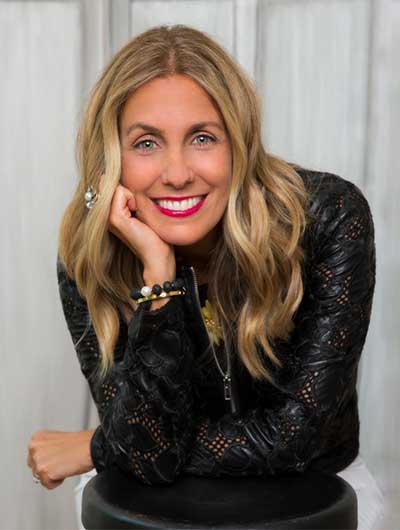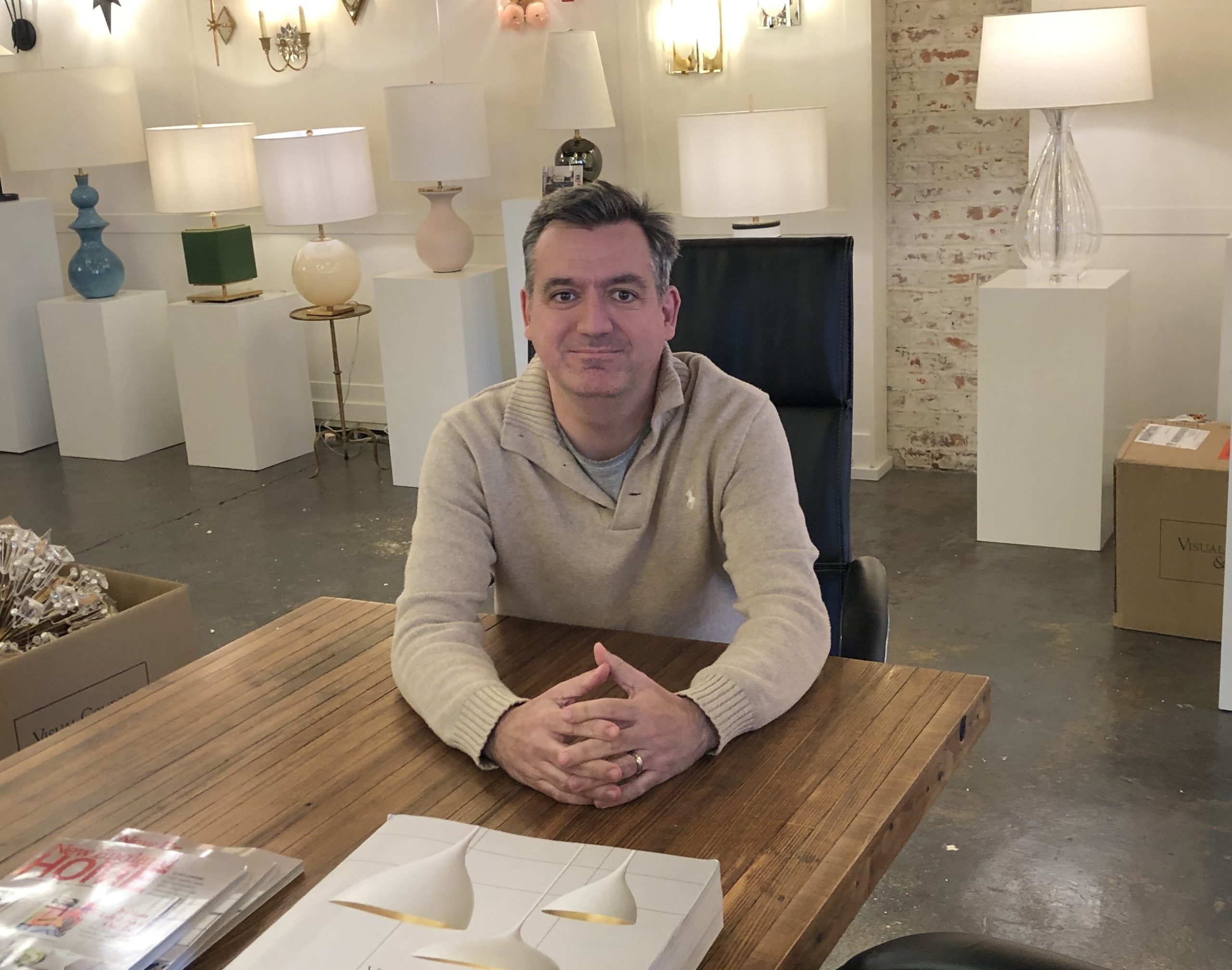
I am obsessed with good lighting. I have always maintained that lighting is a high value investment for the home, which like architecture can appreciably influence the aesthetic of a home. One of my favorite lines, Visual Comfort, is a diverse staple for many designers and a line that I have worked with for over twenty years as both a designer and a corporate buyer of lighting.
To continue our Return on Investment Series, I wanted to dive deeply into the importance of quality lighting in residential design. I had to look no further than my very funny friend and manufacturer’s representative for Visual Comfort, Jeff Pomeroy of Light New England to weigh in on this ever-evolving industry.
Jeff has spent 31 years working in the lighting industry from the ground up. He began his career at Mass Gas Electric learning the technical and distribution side of the industry and has worked for the last sixteen years as a manufacturer’s rep for Visual Comfort. He has honed a wealth knowledge on light bulbs, lighting fixtures, lighting design and the overall business of lighting.
KL: The other day I was listening to the BBC and the reporter was interviewing a Yogi master. The reporter asked her what the most important aspect of yoga was to her and her reply was “breathing”. She went on to say the true essence of yoga is to make that which is sub-conscious, conscious.
I found that very interesting and thought how the same could be said of lighting. It is the idea of a well light space drawing in the eye and emotion and bringing that focal point to a conscious state. Can you elaborate a little more on the role of light, its functions and what the most important aspect might be in your opinion?
JP: That’s a good question and I would not be a good yogi master if for no other reason that I would not look good in a turban. I can tell you that right now. But these are serious questions and I have to be serious now.
So lighting has a couple things… obviously you have the functional side, like task lighting, which is really so important.
When somebody tells me that there isn’t enough light in their space, then it tells me that the light is not where that person needs it to be. That has been one of the biggest problems in my entire career. There’s not enough light because you’re trying to read with your flush mount up on the ceiling!
What I also often think about is the importance to accent your home with light and tell the story of what your home is when natural sunlight is not there .
If you’re talking about landscape lighting, you want something that says “I have a white Victorian” or “I have this oak tree outside”. These little things tell a story and I think when you go inside the home it’s the same thing. Sometimes it’s a beautiful chandelier and that tells one story of a certain house, or sometimes it’s recessed lighting in a contemporary home.
Ultimately, you want to layer your lighting. Inside every room is a different story for the client. The way that I have always done it is to ask “what is going to be your story in this space?” From there, we make sure the lighting helps to tell that story when the moon is out and the sun is not.
KL: So to take it in the context of the decorating. If you’re designing a space and you’re trying to give an experience to the clients so that when they walk in there’s an immediate impression, are you focusing lighting to accentuate furniture and elements in the room? How are you drawing that attention with light to furnishings or other elements within a space?
JP: Absolutely …when you’re talking about lighting artwork that’s really what people want to accentuate. But sometimes it might be a really cool object or an antique. Again, that’s telling a story. Somebody could really love their little antique car collection and they want people, when they go into that room, to really see their little antique car collection.
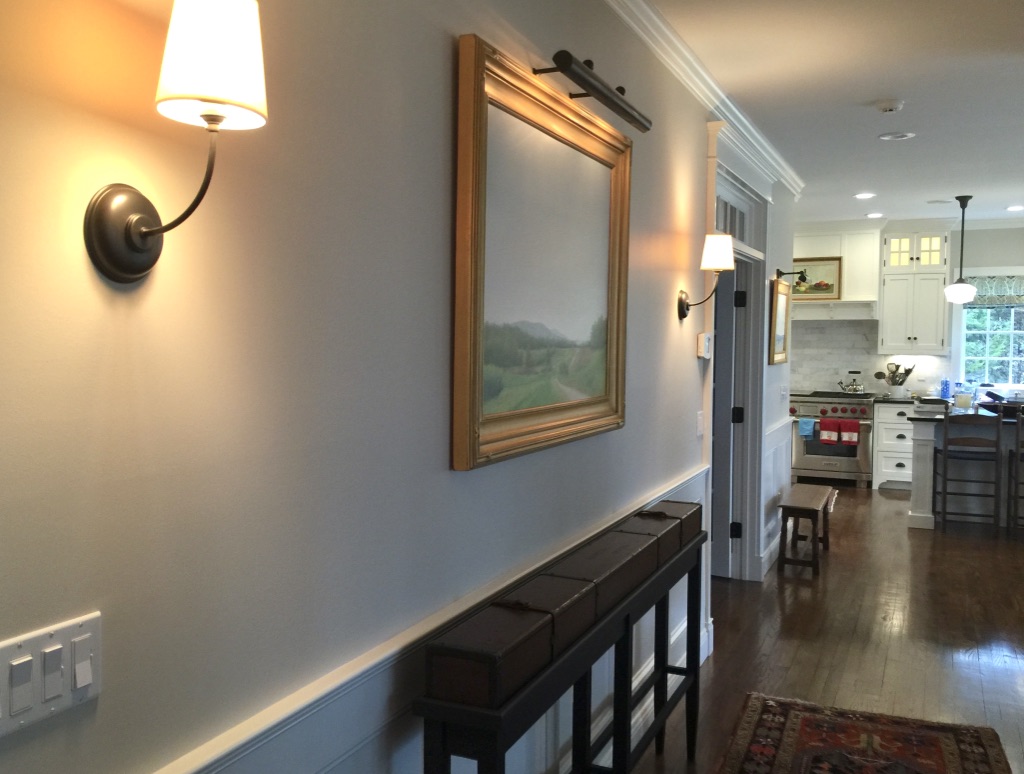
KL: Well I think you can you can walk into a room with no accent lighting, and it could be perfectly decorated, but then you have all those points of interest coming flooding at you at one time. You’ll get an overall impression, but you may not be able to focus on the parts.
What lighting I think brings to it is that that subconscious to conscious state. It’s drawing your eye to specific points within the room to let it rest on that. That’s the story that you’re talking about. That’s the interest.
JP: I think that’s true and I mean even just by the light selection that can be different.
If you’re driving down a main street and you look into a store and they have what used to be florescent bulbs, but is now stark LEDs, and it is all lit up. The lumen output for these things are amazing but it doesn’t feel as comfortable. But when you drive further down the road you’ll see a home that has the fireplace going and a couple lamps on and it feels warm and comfortable and inviting.I think that depending on the type of lighting that you choose you can convey that as well.
So when you use recessed lights, it will light up your room really well but that may not be the feeling that you want.
You may have had a tough day at work and want to go in your living room and read; or you and your spouse want to go and watch your favorite shows… you want that to be more comfortable so that’s definitely part of the discussion.
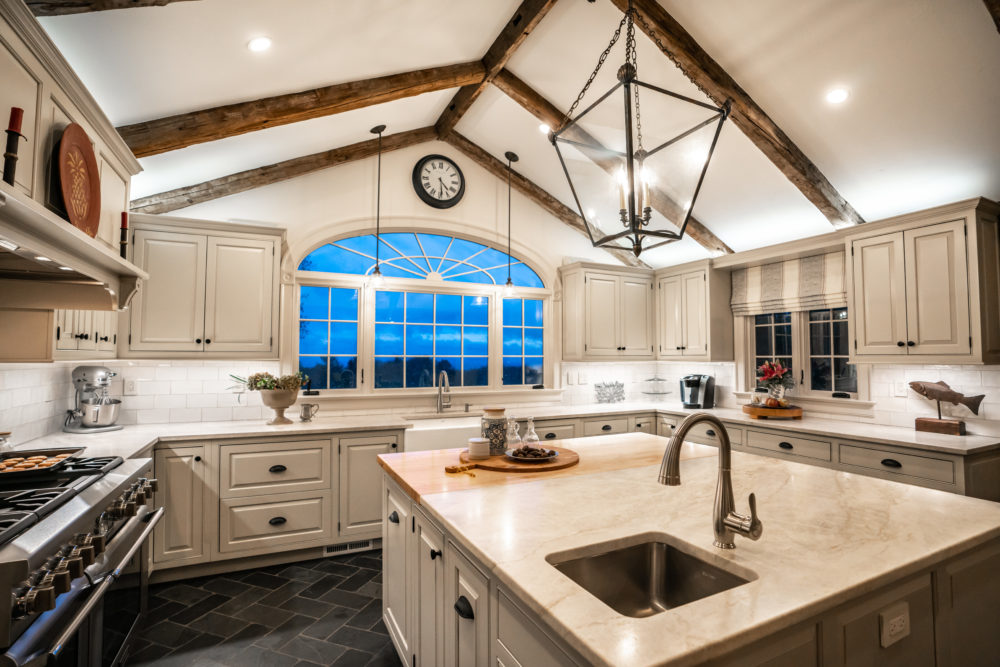
KL: Since you are the light bulb maven, what types of light do you think work best for interiors in terms of the strength of the light and the amount of the yellow versus white?
JP: Absolutely, it’s all about color temperature and the Kelvin scale. Well basically what the Kelvin scale is (very quickly) is if you took an anvil and heated it up, it starts getting hotter and hotter eventually it becomes red-hot, then it becomes white hot and later it becomes blue hot.
The Kelvin scale is a measurement of color temperature, which is what the color looks like. So the lower the number is on the Kelvin scale, the “warmer” it feels.
Historically, 2700 degree Kelvin has been an average but even that’s a lot whiter than humans are used to with incandescent bulbs. I’m starting to see a lot of bulb manufacturers come up with 2200 degree Kelvin bulbs now. They almost look like incandescent bulbs… you would not even know!
I would say that if you want warmer light, then go from 2200 Kelvin up to 2700. When you get a 3000, it starts to get a little too cool and I think most people don’t like that for their home.
KL: The reason I really wanted to write about lighting is because I strongly believe that a well-lit home, both aesthetically and functionally, can absolutely add value to a home’s market worth.
This notion is not an unanimous one with some home industry professionals claiming that homeowners should not invest too much in lighting when fixing up a house for resale. Can you give me your thoughts on this and why perhaps lighting would be an important investment?
JP: Well there’s two levels, first the thing that you touched on which is the quality of light. So a lot of times it is psychological. You might walk into a home that is darker than other homes and it isn’t appealing. What is one of the things that you hear when someone is trying to sell a home: “it’s bright and sunny”.
Humans need light in their life (queue Debby Boone), and there’s something inviting about hearing that. A potential buyer might walk in the house and not even realize it but just feel like they liked or didn’t like a home because of the light level.
Sometimes I look at lighting being like a third base coach in baseball. If they’re doing their job right, you don’t even know they’re there. But if they are not a good third base coach and you are seeing everybody getting picked off over there, then the third base coach stinks and then you noticed them and then they are bad at their job.
I think that if the house is well lit, potential buyers will say to themselves: “that was a great house, it was really beautiful”
You may see a really cool dimming system, that by just pressing the button it faded all of the lights and created a nice setting. People will remember that they liked something like that. And they also may not want to pay for it!
A homebuyer can look at an expense like that similar to a roof or a furnace; it is a benefit that someone else has already paid for.
KL: It’s like the Instagram influencers who put a white filter over all their interior pictures. It makes everything airy and bright and look better and they attract more followers because of it. Same concept.
So, stylistically …not just in terms of all the task and functionality of lighting but aesthetically, is it the same idea with quality fixtures versus cheaper options? If someone is trying to sell their home, should they keep those outdated fixtures in brushed nickel or should they consider making it more stylish by creating focal points with light using nicer fixtures? Or is that it indeed a waste of their money?
JP: Definitely… it’s not a waste of their money at all! I mean you have to look at it like the line I currently represent, Visual Comfort. It very much adds value to your home! I have Visual Comfort lights all over my house (as you can imagine) and when anyone comes in there, they’re always looking at the lights.
Anybody that has an eye can see the difference in quality in something. Visual Comfort lights are designed by designers, and the designers like you, think about things that other people don’t think about.
I have the zodiac pendant in my foyer … everybody that sees it comments on it. I’ve had it hanging up there for 10 years and people love it still. It has become a classic… it’s an iconic piece.
KL: I placed that in a home in Hingham, Mass. probably 10 years ago and then the other day I was watching a TV show and there was that Visual Comfort Zodiac pendant on the show…still going strong.
JP: Why wasn’t mine on the show?? I don’t have the mojo to be on TV.
I very much think that it adds value. If somebody that is willing to invest in good refrigeration like Subzero, or they want to invest in good windows like Andersen windows, then they should be investing in good lighting like Visual Comfort.
KL: Ok, this is a hot one for me and probably for you. Talk to me again about quality. There is an abundance of trendy designs saturating the market place at extremely low prices. Consumers are lured into forsaking quality to save money. I can’t tell you how many higher-end, beautiful homes I enter that have horribly cheap lighting installed.
Why is it so important to invest in quality lighting and how do you differentiate yourselves when importers are knocking you off as soon as your intros hit the market?
JP: I always explain to people that if you own a house, just spending a little bit more on your light fixtures is going to add more value to it…I mean it is part of the house!
Why are you adding a bathroom to your house? Maybe you need a bathroom but you also know that if you pay $50,000 to get a bath remodeled, you might be adding $100,000 of value to your home because now you can say it’s a four bath instead of a three bath. Lighting will do the same thing.
Yes, you could pay $500 for a chandelier in lieu of $1000 for chandelier, but that thousand-dollar chandelier might add $2000 onto your house because somebody didn’t think of using that fixture. Someone could look at that specific light and may not have found something like it. If it’s a professionally designed space, look at the value that was just added. That buyer might say “Oh my, I want to live in this world”.
That’s why people buy shelter magazines because you want to live in that world and if you’re not installing nice light fixtures you’re not living in that world in my opinion.
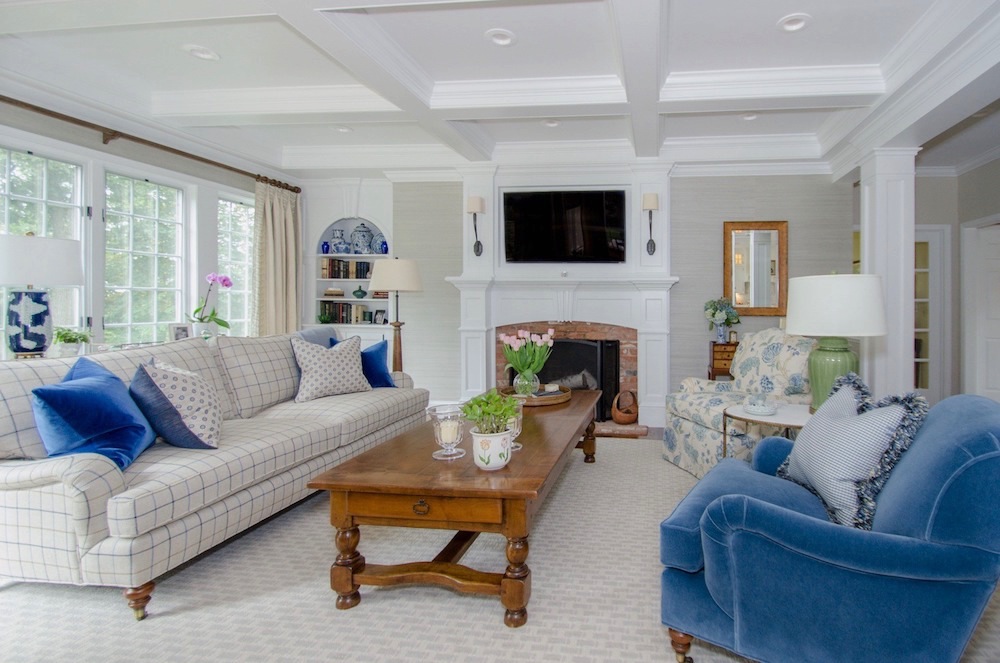
KL: Why do you think real estate agents and home-improvement people are saying you don’t need to spend that money… that’s a waste of money from a return on investment standpoint?
JP: I don’t know why they would say that… it just doesn’t make any sense. A realtor is the same person that recognizes the value and says they’re going to leave that Subzero refrigerator there. To me, it’s the same.
KL: Right…but it helped sell the house.
JP: Exactly … when I go to sell my house I’m going to make sure that the realtor knows that it is loaded with Visual Comfort light fixtures that are high-quality, well-made, handmade fixtures with great finishes. Which now leads to your other question.
KL: Nice segue!!…
JP: That was a segue…Do you like how I did that? Yeah! There’s a huge difference between a good manufacturer and a knock-off artist. A knock-off artist is annoying. I always like to ask any person: Why would you want to have a copy of the original when you could have the original for not that much more?
The good thing about it, and again I can only speak for Visual Comfort, is that it is truly original. They do their own things…they are truly original.
Visual Comfort partners with designers to design lights for them and they manufacture them to great detail.
The canopies are designed, the chains are designed, and the finials on top of the lamps are designed. Visual Comfort make special glass for only that fixture and they make special chain for only that chandelier and a special base for only that lamp. Knock-off artists are never going to be able to do this.
KL: I also think that they are not able to get the finish. I walk in and can flag it with just that shiny chrome … that cheap shiny chrome.
JP: Nobody can mimic a good finish or a solid brass fixture or if there is a solid casting. You can try to make it look like it, or you can steal some sales here and there from people that don’t care, or maybe they just don’t have the money. But honestly I think that everyone should try to make the investment to do it. It’s good for their home and I think it’ll help sell their home as well.
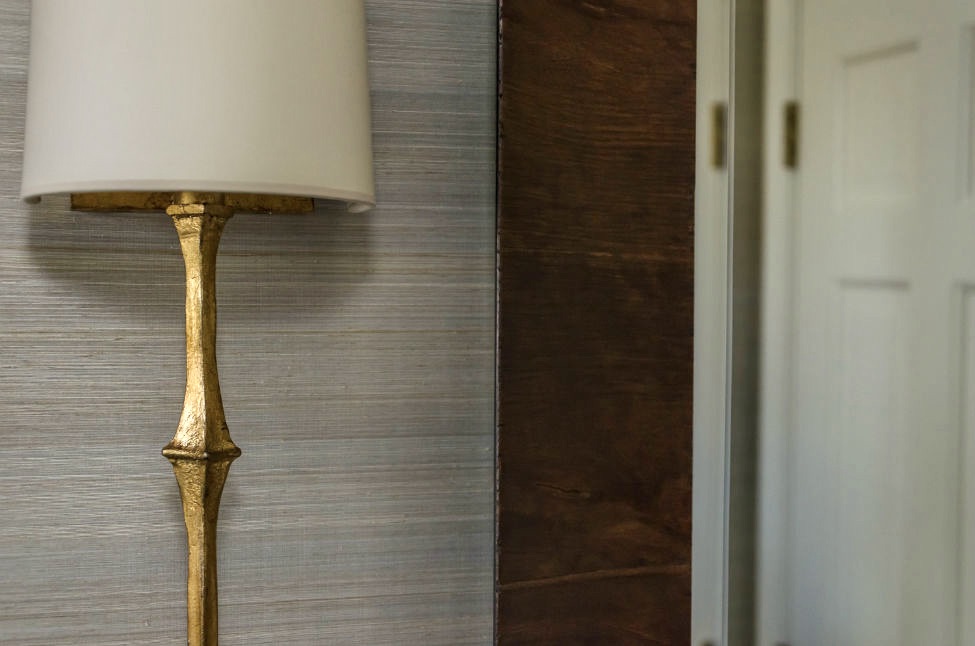
KL: I look at it like it’s akin to buying a suit from Chanel and then going to Charming Charlie to buy some plastic bobbles for your neck.
You bought this beautiful home, you’ve done the work of landscaping or having a gourmet kitchen installed and then you’re going to put in cheap lighting that costs $199?
JP: Precisely…that’s where the word “Craptacular” comes from!! Really, you just need to stick the landing! It’s like when there is a great TV show and you get all the way at the end and then the finale stinks… you know I’m looking at you Seinfeld. You did everything right… just stick the landing!
One thing I have always liked about lighting is that it is is at the Apex of construction. We are at the crossover from construction into finish and I’ve always loved that about our industry.
When building, everybody’s putting together the lighting package as one of the last things because they are trying to get their certificate of occupancy. But for designers, that’s their kick-off point! Designers will think, “Wait a minute!”If we are going to tell the story of the space and the lights are part of it then they need to be part of that decision.
I believe there was one case (at least that I know of) where you actually designed a room around one of our light fixtures, which I think, is great! Sometimes it can be the inspiration for the room.
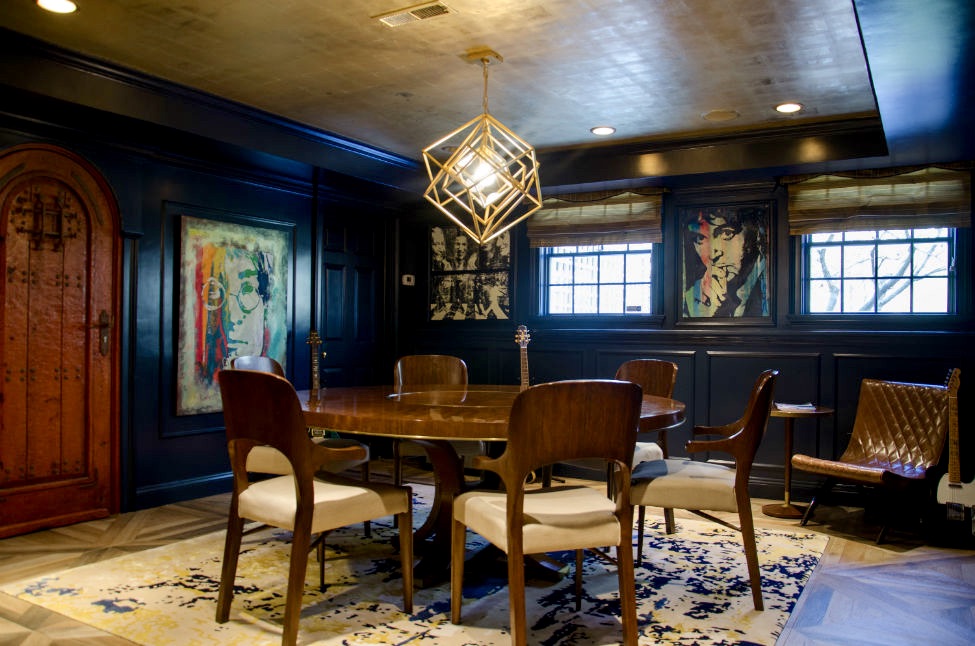
KL: To that point, from the construction standpoint that’s why I always really liked being involved in projects from the get-go. Not that I want to be a backseat driver to the architect or contractor but I feel bringing the Designer in after the house is built is just a terrible mistake! While lighting seems like it is a finishing detail, it often gets specified for placement and scale… those very critical things …. at the front of the project even if they’re not installed until later on.
Having a professional that has the designer’s perspective and process equally involved at the get-go can be the difference between a home that looks balanced and cohesive and a space that might be missing that important finesse.
JP: You’re exactly right, I think the interior designer should be in the very beginning of the project even if they do more later. Back to baseball again… if you are a relief pitcher, you are the closer, but you still want to know what’s going on in the game because you have to make your plans for when you go in.
KL: How has your technical background helped you to sell Visual Comfort to the designer community and retailers?
JP: I think that the design community have talents and skills that I don’t, but I think that my knowledge of lighting has been good for them because I can give them information that will help them paint their grand painting. Whether is has to do about sizing or placement, or I can talk about recessed or LED’s and all of those sorts of things in conjunction with what they are doing. So I do think that it has been helpful.
Designers have the benefit of having an idea of vision. Thinking again of a painting. An artist knows what the painting is to become. They know what they’re going to do to it and they do these little details to build this story. That is what designers do and I appreciate and respect that a lot.
I think that lighting is an important part of it and I think that Visual Comfort is a great line for this concept. It is just a great piece of the puzzle for you guys.
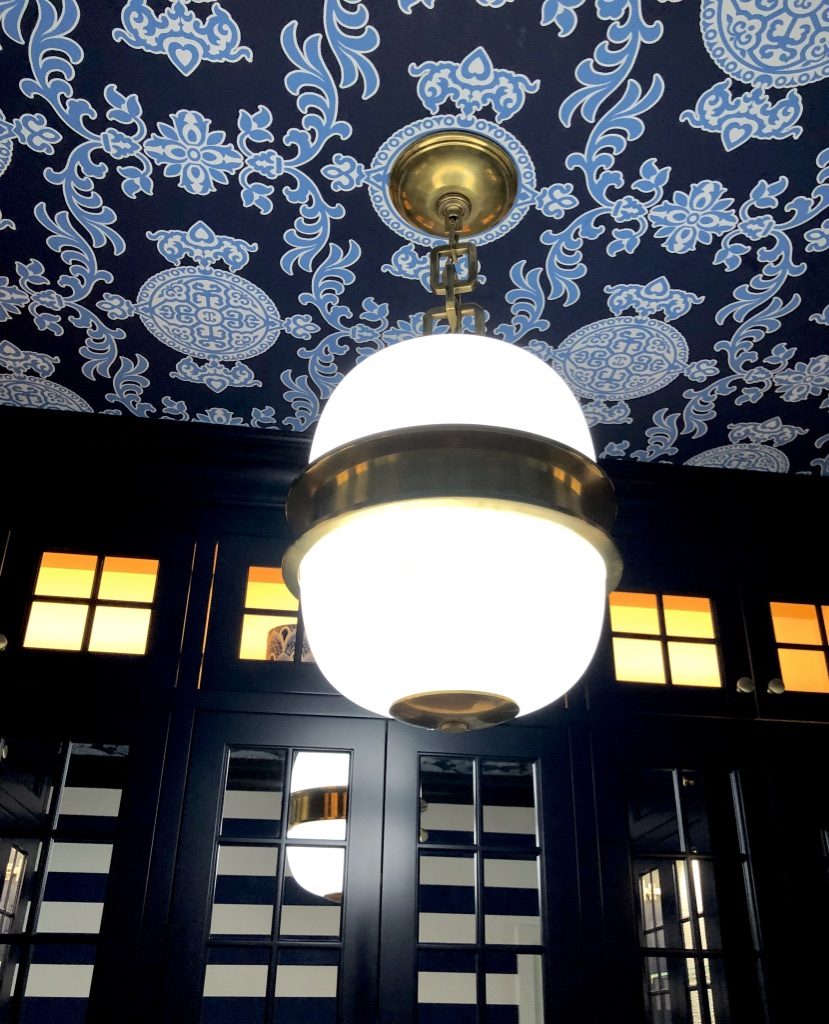
KL: Visual Comfort is a leader and my absolute go-to for lighting in my projects. Can you speak about why they are such a highly specified line in the design world, where they are trending as a company, and how they maintain the balance between trend and classic?
JP: Yes, I think that designers can see detail better than anybody and I know a lot of designers! Designers can pick up on details so they can see the quality behind Visual Comfort.
Visual Comfort works with a wide array of designers and the founder of Visual Comfort was always willing to invest the money into his vision of the company.
Andy was willing to put stock on the shelves for people and he was willing to put money into the design. He was willing to put money into all of these things and I think that professionals recognize this.
Visual Comfort’s expertise is picking out the right things.
You have different designers like Sandy Chapman and Thomas O’Brien who marry well together but yet they’re not alike. Then you look over here and there is Kelly Wearstler and Aerin Lauder and you are like…WOW!
When Aerin’s release first came out I said “Wow, we don’t have anything like that!” Then Kelly showed up and I’m like “WOW…we don’t have ANYTHING like that!” We just introduced Julie Neill and it’s another “WOW!”
I think Visual’s success is that Andy and the team at Visual Comfort have done a great job marrying the right designers into their brand that make it a wide, expansive line with many options.
If I am a designer, I’m saying to myself , “Why do I need to go anywhere else?” Even if a different designer is using Visual Comfort, they have a whole different house with a whole different look. The line is large enough to cover both spaces in a completely different way.
KL: In your opinion, what are the top three faux pas’ that consumers make when purchasing lighting?
JP: I think sizing is a mistake they make a lot of times. I think that they don’t know what size to use, so they just guess. And particularly with the online marketplace, they just click on a light and not think about it. They haven’t gone to see a lighting professional or designer so they have no sense of what size to properly select.
KL: Visual Comfort is headquartered in Texas and scale is big in Texas.
JP: Scale is big in Texas
KL: So when I walk into the Visual Comfort showrooms in High Point, I appreciate just how giant some of these fixtures are. Here we are in little ol’ New England where there are an awful a lot of historical homes with lower ceilings and smaller footprints.
I find that consumers are often conservative when it comes to scale. Even if your home is large, buying a large fixture can be really scary. I think at the lower end of the market you don’t see large scale presented as often as you do at the higher end.
JP: Exactly! They don’t want invest and on top of it, a lot of people in these old New England homes have these little tiny Williamsburg lights. Consumers are so used to seeing their little tiny Williamsburg and don’t realize that they can actually handle a 28 to 32 inch wide fixture in their space.
Psychologically, there is this idea that this is the size of their light is supposed to be because of what currently exists.
KL: It’s the same idea as when you’re doing construction and you don’t have window treatments in the windows for a period of time. Then window treatments are added in and clients are often taken back because the light has changed so dramatically.
That first initial impact of having their light altered really psychologically affects them but then over 10 days or so their eyes adjust to it and it’s like it never was an issue
I think scale also plays into that same psychology of what they are accustomed to. It is again…that subconscious to the conscious.
JP: Think about it. Have you ever been in a room and your lamp is over in this corner, and you buy this new loveseat and move the lamp over to a different corner and suddenly the whole room looks much different because you moved it?
In terms of recessed lights and landscape lights, people do too much. They think to themselves “We can always dim it,” so they will put a million recessed lights in the ceiling.
Or they will put a bunch of the cheap solar powered LED landscape lights and light up their entire yard and that drives me crazy.
I think that if you’re dealing with a professional who knows how to do it, they can tell you “No, No… you don’t need to do that. You can just use these recessed lights and this will light your space!”
Recessed lights are just cones of light that wash down for ambient light. As long as they’re layered, it is going to be fine. Or you can use a recessed wall washer or spot to focus at a painting… not light up the whole wall!
You just need to put the light where you need it. People use dimmers as a crutch instead of putting lights in the right place. When I use recessed lights, I like to light architecturally. How big is the room? Then you just need six or so in that space and you will be fine and then let’s put a lamp over here, etc.
As for the third mistake, honestly, I think that people are relying too much on the Internet. They are buying lights and not lighting.I think that’s such a mistake, and was never a mistake until the last 10-15 years.
People think that buying lights is lighting but it is not the same thing. Lighting is, again, telling a story. It’s like design… that’s what lighting is and what good lighting does. Lighting is saying “how do we light the space appropriately?” versus “Oh, I need a light” and then just buying a light. I think it can be a big mistake to not deal with a professional lighting person.
KL: How important is it to have consistent finishes in lighting a floor plan? What is your or Visual Comfort’s position on that? That is always a hot issue with clients and their fear of mixing metal finishes.
JP: I’ll tell you something; that’s a great question because if you asked me this question as early as two years ago, I would’ve said just to try to match the finishes and it would look better. But honestly I’ve seen mixed metals done many times now and I think that it looks great.
My wife & I have these antique nickel Hicks pendants in our bedroom, which we love. My favorite swing arm lamp of all time is the Aspect by Barbara Barry. We really wanted the bronze Aspect lights as opposed to the pewter but we weren’t sure if we should mix the finishes or not. But guess what, we did and it looks fine!
It’s always best when you’re dealing with a professional (like you) who can suggest options and let them know if it will work.
KL: It’s interesting because I think this global ethnic trend that has emerged has allowed for a lot of mixed metals. So again, bringing it from the subconscious to the conscious. I think the industry trends right now overall are using mixed metals and perhaps even you didn’t realize that your own opinion was re-formulated based on probably what you observed in the marketplace.
It’s that sort of slow integration into our awareness of what is happening in other product categories that suddenly make it feel right and you are like “OK…it works!”
Suddenly the big rules of lighting aren’t really the rules anymore. Now it’s a universal thing to use mixed metals and it’s being done all over the place.
Ok, so we have moved to LED’s; we are online and it is more accessible than ever; and it is being knocked off across the globe. We are there now…so where do you see it evolving? If you had a crystal ball, where do you see the lighting industry moving over the next 5-10 years that might be different from what we are accustomed to now?
JP: I think after 31 years in lighting I’m going to be a barista in Starbucks in five years. It’s over!
Honestly, what I’m seeing is this: I think that LEDs are going to get better and better. Considering all of the concerns of the environment, I think that we might start to see even more laws affecting how much wattage is used, like they have been doing in California for years.
You’re going to see LED’s as a larger scale thing because, why not save energy AND money? I cannot understand why anyone wouldn’t want to do that. And because LED manufacturers have been able to master the color temperature and rendering of the light source, there’s no reason for anyone to ever have to use incandescent again.
KL: Remember when we were all stock-piling bulbs? I went out and bought boxes and boxes of them and was shoving them into very closet.
JP: Yes! You were afraid because you thought you were going to hear “be-be-be be-baaayy” sound. I am telling you those early florescent bulbs just messed with everybody. You get an idea in your head that an LED will sound or look horrible.
Or halogens… you’d buy a halogen torchiere because it was so bright, and then all of a sudden you see this story on 60 Minutes with a house in flames and Morley Safer just saying (deep voice) “Halogens…are they safe?” And isn’t it ironic that his name was “Safer”?
Lighting has taken so many turns, but people always seem to go back to incandescent. Frankly, there’s no reason not to use LED’s. I think that there might be a chance that at some point that you will not be able to get incandescent lamps. I can see a time where that will happen.
In terms of the lighting business, I think that it’s going to become a lot more of a specialty thing. I think that you will have lighting consultants and certain lighting showrooms that will be educating the customers while distributing certain lighting products. I believe that’s the way in which lights will be sold to people who really care about lighting.
When I got in the business in 1988, showrooms were everywhere.
I think that it’s changing… the retail market and the public has spoken and they basically want to buy online.
With that said, I think the best lighting people will still be there and I will be there to support them. When you consider what we were talking about earlier, I hope that end users will consider lighting knowledge as something important.
KL: It’s happening in the design trade too …luxury design versus online E-design…
JP: Yeah, right. And E-design shouldn’t even be a thing.
KL: Well I think for the right person it might be the right solution. It’s like Visual Comfort versus a knock off. Luxury design versus E-design.
Designers will still be have a place in luxury design bringing their years of experience in a very customized and individual way. Meanwhile, I think E-design will be a little bit more generic and appeal to more of the DIY’s and that will probably be a much broader market.
JP: Well I will tell you… I know that I’m not great at matching, which is why I buy Ralph Lauren clothing because they do the matching for me…it’s like Garanimals for adults! So I can see that, as a pre-designed room footprint where somebody has already matched everything together for them. But I really hope that people don’t miss the fact of what a designer is and what you do. A designer is beyond somebody just to pick out furniture.
The designer is there as a partner…there is a psychology to it. As a designer you want to connect with your client and your client wants to connect with you. You get to know them and you know what it is that your client wants. You are going to make sure that their space tells their story in a way that even they didn’t think they could. I just don’t think you can do that online. It’s that human connection.
KL: I also think it is consistency. I have a lot of clients that will hire me for one or two spaces and then call me back a couple years later to finish a couple more spaces. They have to chip away at it because they have their budgets or what have you.
I think the importance is the fact that they will call me back because they want that consistency. They want that story to be told throughout their home.
When you start buying online with e-design or you’re shopping and doing it yourself, it’s very hard to execute without having that training or perspective. It’s not easy to have that story consistently merchandised throughout your home from a color, style and functionality standpoint.
It has to be that story just like lighting needs to be a story that carries throughout the whole house. You can’t have one perfectly lite room and have it dark elsewhere.
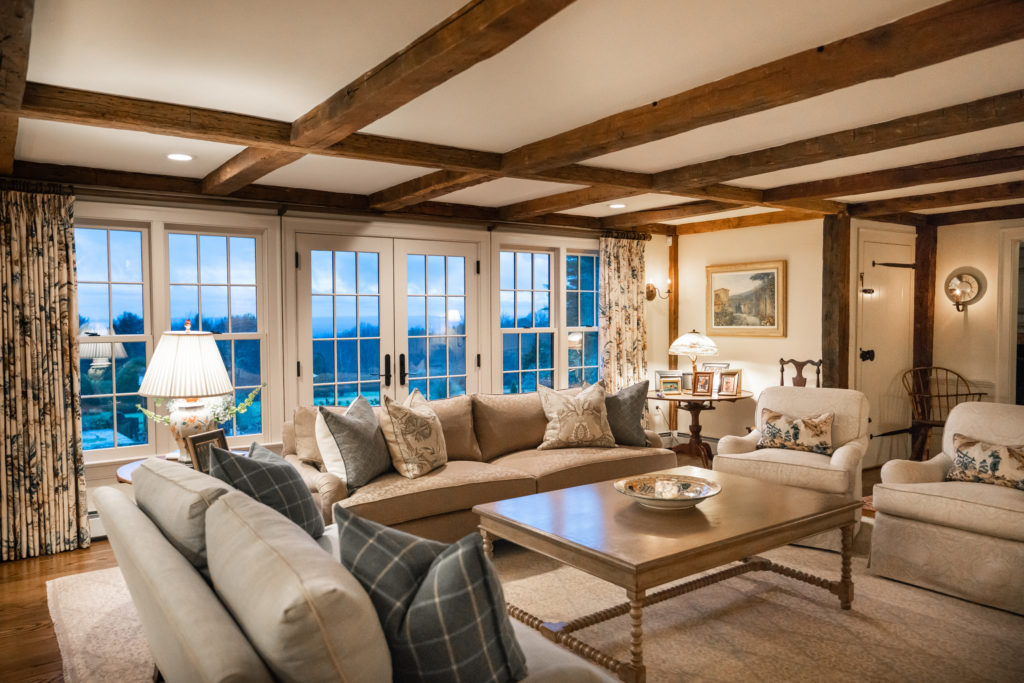
JP: Lighting is a story, but lighting is a little story in the larger story of a designer because it is only one part of the things that you guys have to think about. I mean, I agree one hundred percent. I think that human connections are important. A lot of people asked me over the years what is the secret to life because everybody wants to know.
KL: Oh now this is getting interesting! What is the secret to life Professor Positive?
JP: Are you ready for the secret to life? Ok…it’s Starbucks!
No, the secret to life is communication… that’s the secret to life. The secret to life is there are other lives out there and there and it is how we deal with each other. I think that’s always been the case and I think as great as the Internet is… as amazing as it is… I think that technology is forcing humans apart.
Making that connection with another human being who has the experience that you have, and has the education that you have in this field is important. In dealing with that person you have a whole discussion with them…what they like and don’t like.
It’s not just like “I’m looking for a chandelier”… well hold on a minute …let’s talk about what you’re doing in that space. Are we sure you want to do a chandelier? What kind of fixture do you want with what’s happening here?
I hope that people don’t miss that that human connection. I think it’s very important and I just don’t think it’s healthy. If you need a lighting plan, go to a lighting store and let them help you with your lighting specifications. You will have a better experience.
The funny part is the pricing in the stores is the same as online! It’s not like they are getting a better price.
I think it is unhealthy to not have human connection and to be always connected electronically. I’m a strong believer in that and I’ll die thinking it. And I’ll probably be cremated with a digital machine, ironically.


